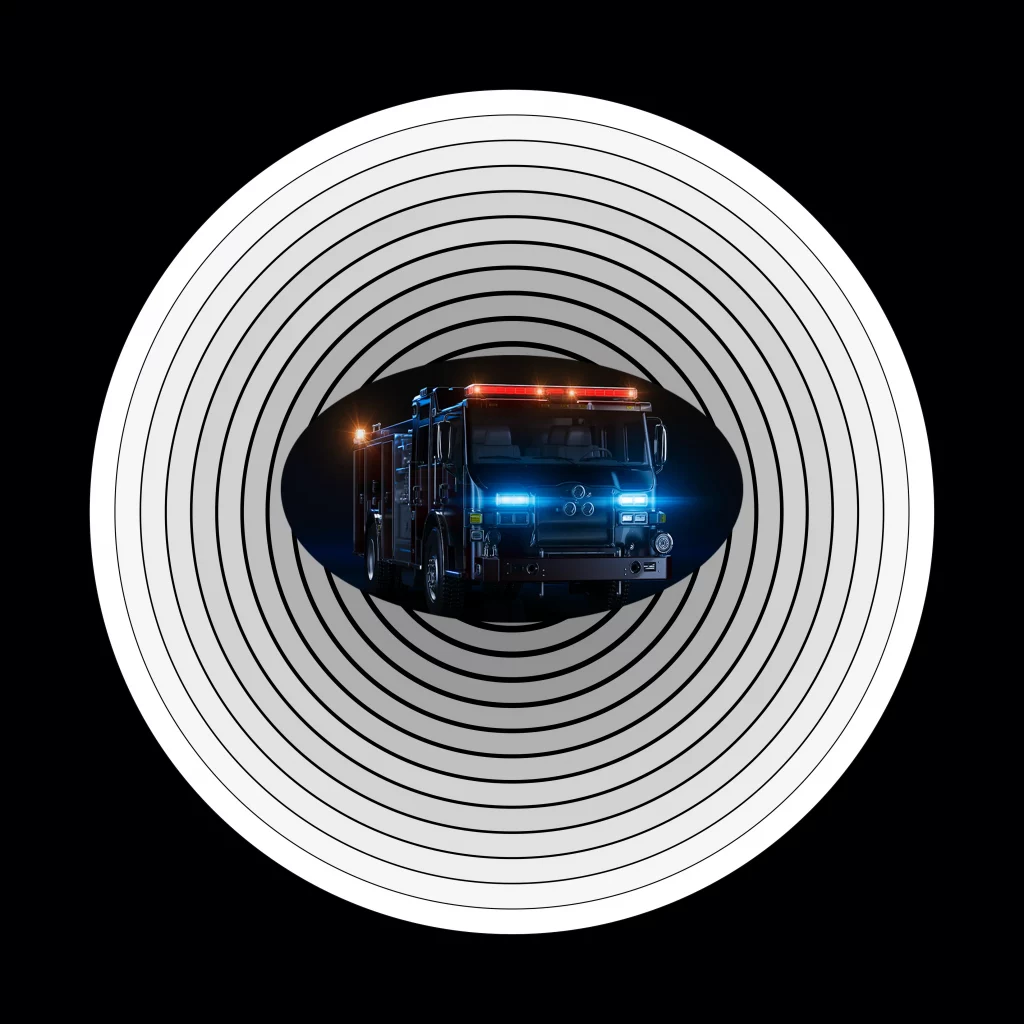Approach of an Emergency Vehicle
Be aware of your surrounding traffic – Most hear the siren before seeing the flashing reds. Check around your sides and rear and make a mental note if it is safe gently engage your brake lights. Take note of other drivers because they too will be responding. Be aware of your surrounding traffic.
Locate the emergency vehicle – Hunt for flashing red lights and listen for sirens. Locate the emergency vehicle to help you to decide where it is best to stop.
Gentle Slowdown – lowdown and warn rear traffic with your brakelights on keeping an eye on the overall traffic slowdown. Scan for a possible lateral move in case you find yourself in the emergency vehicles path.
The goal here is to gently stop and manage surrounding traffic safely. The next step is to locate the emergency vehicle and plan to move out of there way if they are coming directly act you. If not just slow to a safe stop. And yes carefully move out of the path of the emergency vehicle if needed.
It is also best to stay clear of intersections, but do your moves carefully and gently paying attention to the approaching emergency vehicle and your surrounding traffic. And relax, there is ample time. Often the emergency vehicle is gone before you get a chance to move out of the way.
RED LIGHTS
Red lights flashing, bouncing off buildings reflecting all directions warning someone needing urgent help.
SIRENS
A FEW DISTINCTIONS TO TAKE NOTE OF
- Brake lights on, are different than braking.
- Turn signals warning on, are different than moving in that direction.
- Letting your foot off the gas, is different than activating your brake lights.
- Gently moving laterally is very different than bolting to the right!
From Motor Vehicle Act current to October 19, 2022 [RSBC 1996] CHAPTER 316 Part 3 177
177 On the immediate approach of an emergency vehicle giving an audible signal by a bell, siren or exhaust whistle, and showing a visible flashing red light, except when otherwise directed by a peace officer, a driver must yield the right of way, and immediately drive to a position parallel to and as close as possible to the nearest edge or curb of the roadway, clear of an intersection, and stop and remain in that position until the emergency vehicle has passed.
177 On the immediate approach of an emergency vehicle giving an audible signal by a bell, siren or exhaust whistle, and showing a visible flashing red light, except when otherwise directed by a peace officer, a driver must yield the right of way, and immediately drive to a position parallel to and as close as possible to the nearest edge or curb of the roadway, clear of an intersection, and stop and remain in that position until the emergency vehicle has passed.
During a driving lesson what do you think is the most common response a new driver takes? Surprisingly most respond with the exact same movement – typically two choices. First choice is to follow the flow and do nothing. The second choice is surprisingly quick. Any ideas? Hang on! Never a dull moment teaching driving in the Greater Vancouver Area.









Comments are closed